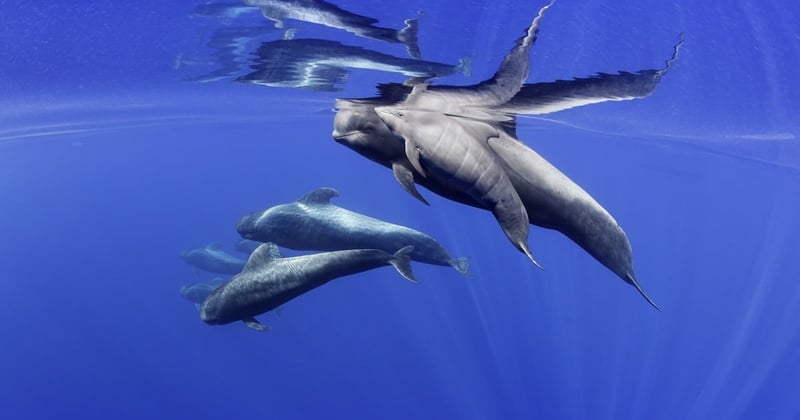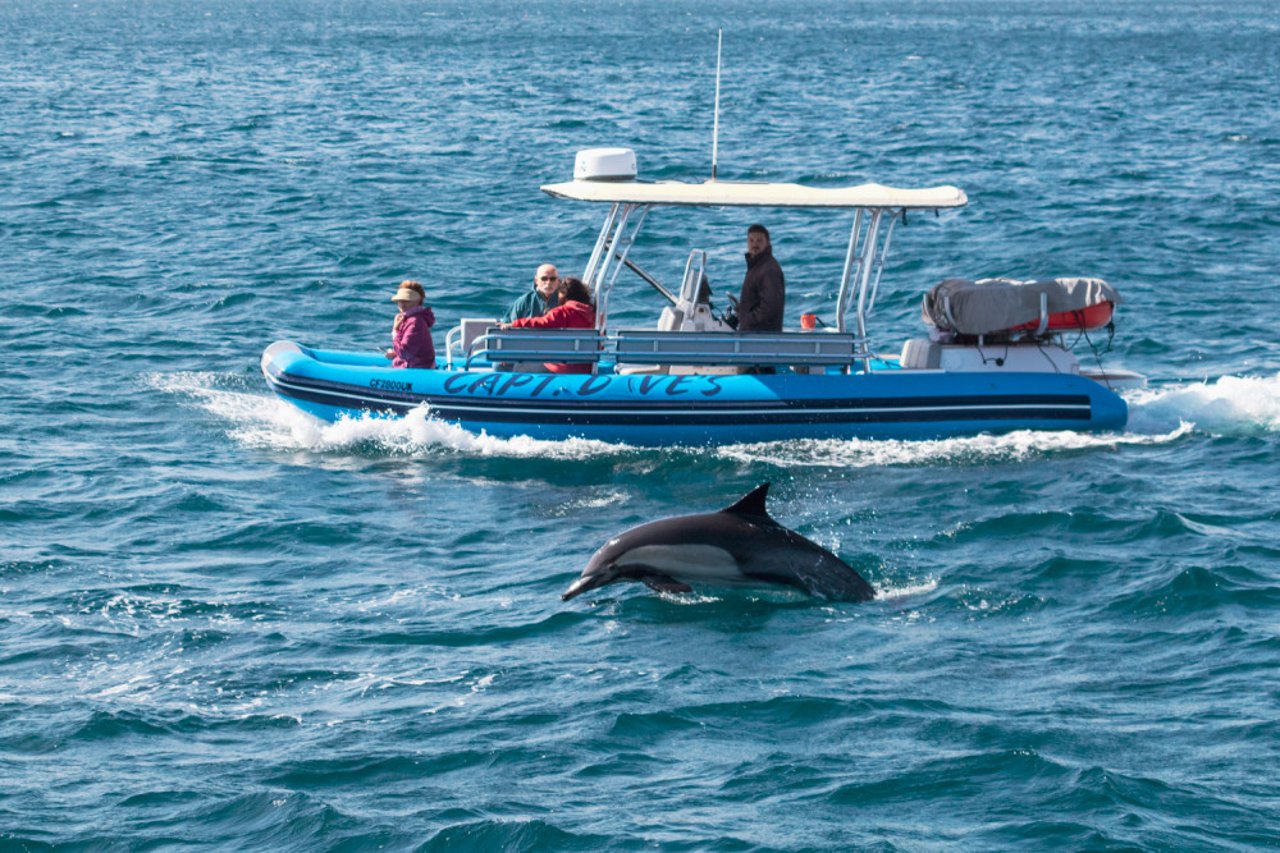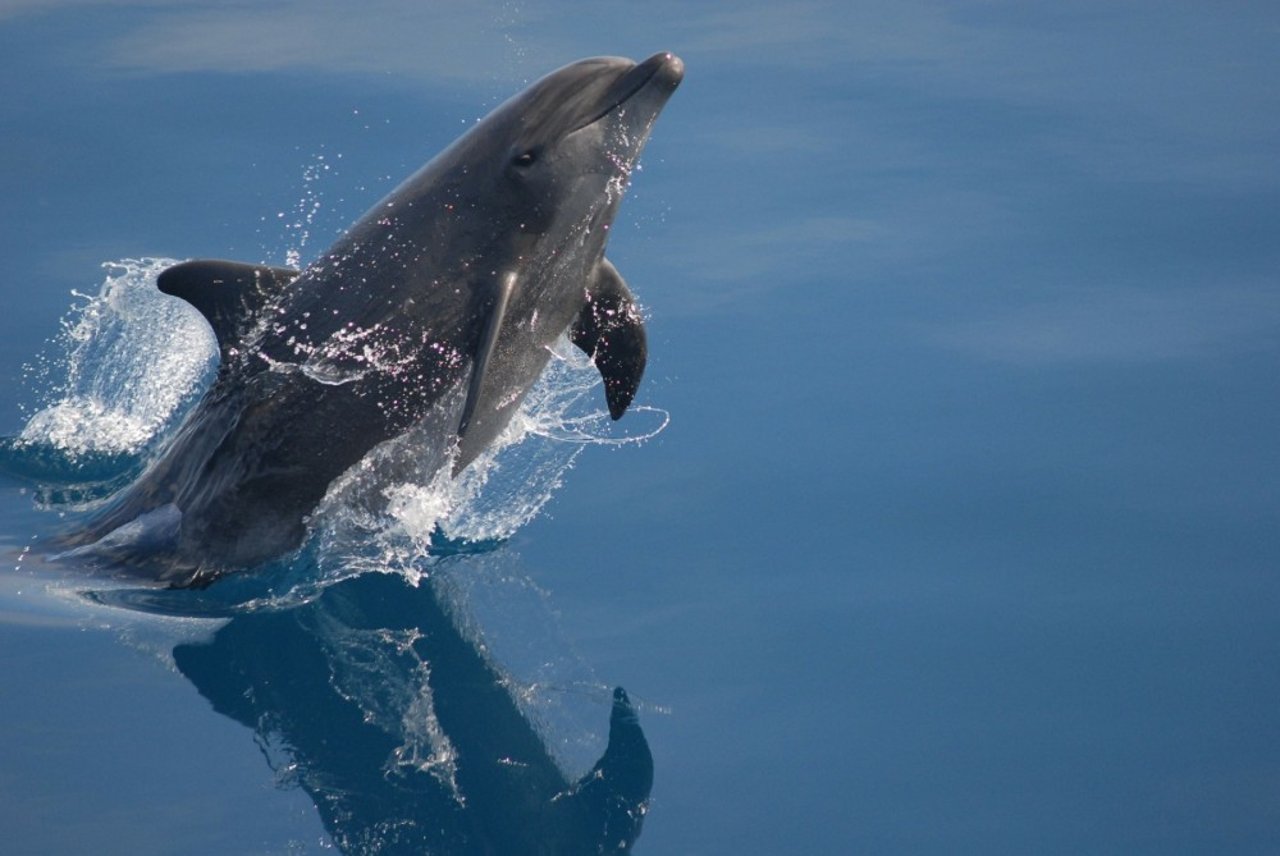
Two new Whale Heritage Sites awarded in a major step for wildlife protection
News
Tenerife-La Gomera marine area in southwest Tenerife, Spain, has been awarded a prestigious title as the first Whale Heritage Site in Europe, showcasing a great alternative to cruel wildlife attractions. It joins Dana Point, California, USA, also announced today (January 27) as the first site in the Americas to be awarded Whale Heritage Site status
Header image credit: Francis Pérez
Whale Heritage Sites are a global accreditation scheme developed by the World Cetacean Alliance and supported by World Animal Protection, that recognises outstanding destinations that offer and celebrate responsible and sustainable wild whale and dolphin watching.
The scheme offers the travel industry a way to protect marine wildlife and support sustainable practices.
A dolphin swimming alongside a boat in Dana Point, USA. Image credit: Capt. Dave's Dolphin & Whale Safari
Both locations are a stark contrast to cruel, captive marine animal attractions that offer whale and dolphin performances and subject animals to lives of misery and suffering, such as SeaWorld.
Opportunity to witness a variety of whale and dolphin species
The site in Tenerife has long been a popular spot to see whales and dolphins in the wild and this accreditation recognises the community’s commitment to respecting and celebrating these animals.
There are 28 cetacean species found in the island’s waters, most of which are migrant or seasonal. Though some are local residents, including short-finned pilot whales, sperm whales and bottlenose dolphins.
A bottlenose dolphin jumping out of the water in Tenerife-La Gomera. Image credit: Pixabay / David Mark
Dana Point, named the Dolphin and Whale Watching Capital of the World®, is one of the best places to view the magnificent blue whale. It also has a variety of year-round whales and more dolphins per square mile than anywhere in the world.
Accreditation requirements
To qualify for this global accreditation, candidate destinations must meet set criteria which recognises their commitment to cetacean conservation through responsible wildlife interactions and sustainability. These include:
- Encouraging respectful human-cetacean coexistence
- Celebrating cetaceans
- Environmental, social and economic sustainability
- Research, education and awareness
A good guide for tourists
Whale Heritage Site status provides tourists with an easy way to select responsible whale and dolphin watching destinations; places where people can experience cetaceans in their natural habitat and in an authentic and respectful way.
There are only two other Whale Heritage Sites in the world: The Bluff, South Africa, and Hervey Bay, Australia.
Elizabeth Cuevas, Whale Heritage Sites Manager at World Cetacean Alliance, said:
"The designation of Europe’s first Whale Heritage Site is a wonderful step forward for responsible tourism. We believe the site is fast becoming a world leader in sustainable whale and dolphin watching and this certification will help the local community by recognising responsible whale watching practices supported by the latest research and conservation efforts."
Protecting wildlife and the natural world
Becoming a Whale Heritage Site will ensure that visitors to Tenerife-La Gomera marine area and Dana Point are contributing to destinations that celebrate their natural heritage, protect marine wildlife and build a connection between local residents and sea life.
In addition to the opportunity to observe cetaceans, vibrant festivals and other events celebrate the marine environment and provide education and inspiration for tourists and locals alike.
Our US programme director, Ben Williamson, with a dolphin jumping out of the water at Dana Point, USA
Nick Stewart, Global Head of Campaigns at World Animal Protection, said:
"Captive dolphins are often forced to live their entire lives in barren tanks, reduced to performing in exchange for food, all in the name of family fun. This isn't entertainment – it's cruelty.
"These new Whale Heritage Sites are immensely important in the protection of wildlife because they showcase a viable, sustainable alternative. The sites will also help to spotlight tour operators who offer tourists a wonderful experience seeing whales in the wild while protecting the welfare of marine wildlife. In the 21st century, as the world builds back from Covid-19, there really is no reason for travel companies to sell tickets to cruel, outdated attractions which keep captive dolphins in permanent lockdown."
A new future for tourism
Tenerife-La Gomera marine area’s location in tourist hot-spot Tenerife is popular with the island’s 6 million annual visitors.
The importance of the tourist industry to the local area is reflected in the local and national regulatory frameworks, which provide formal protection of the marine ecosystem, with two Special Areas of Conservation (SACs) and a strong legislative framework protecting cetaceans.
Once travel is resumed, tourists visiting the site in southwest Tenerife or Dana Point will know they are taking part in a unique activity that respects and protects whales and dolphins. It’s an opportunity to experience these amazing creatures in the wild, where they belong.
These new Whale Heritage Sites are immensely important in the protection of wildlife because they showcase a viable, sustainable alternative. The sites will also help to spotlight tour operators who offer tourists a wonderful experience seeing whales in the wild while protecting the welfare of marine wildlife.


